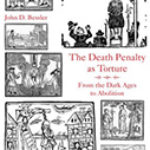Fitness To Plead: International And Comparative Perspectives

Authors: Ronnie Mackay and Warren Brookbanks
Publisher: Oxford, UK: Oxford University Press, 2018. 368p.
Reviewer: Roger S. Clark | March 2019
In her Foreword to this very useful collection of essays, Baroness Brenda Hale of the United Kingdom Supreme Court asks whether we should be glad or sorry that so few people are found unfit to plead in a criminal trial. She notes that in England and Wales about a hundred persons are found unfit every year, and yet “7 percent of people in contact with the criminal justice system have a learning disability; 25 percent of people in prison have a learning disability; 25 percent of women and 15 percent of men in prison reported symptoms indicative of psychosis; and growing numbers of older people are sentenced to imprisonment, in part because of the growing number of prosecutions for historic sex offences” (p. vii). These, she notes, add up to many thousands of people. Why are not more people kept out of the system at the fitness stage?
Such discrepancies are, of course, not confined to the United Kingdom. Yet there is a dearth of serious literature internationally on fitness to plead, and most Criminal Law courses the world over devote little time to it. In many of the teaching materials used in common law countries, it appears as one of three branches of “insanity”, along with insanity at the time of commission of the deed and fitness to be executed. The tests for each of these, it is typically explained, are different and concern a (mental) state or capacity at a particular time.
Indeed, the leading English case on fitness, R. v. Pritchard (1836), uses the term “sanity” in the context of a deaf-mute whose competence to stand trial for bestiality was in question. Alderson B. uttered the canonical statement that “There are three points to be inquired into – first, whether the prisoner is mute of malice or not; secondly, whether he can plead to the indictment or not; thirdly, whether he is of sufficient intellect to comprehend the course of proceedings on the trial, so as to make a proper defence—to know that he might challenge any of you [jurors] to whom he might object—and to comprehend the details of the evidence, which in a case of this nature must constitute a minute investigation . . . . It is not enough that he may have a general capacity of communicating on ordinary matters.” The jury held that, while the accused had been taught to read and write and was capable of entering a plea of not guilty, he was not capable of participating fully in the trial. He was confined at the pleasure of the executive in accordance with the relevant legislation.
I have always been amazed at the extent to which United States courts look to post-1776 British cases to illuminate their own law. Pritchard, like its insanity-at-the-time-of-the-act counterpart, McNaghten, which has been overwhelmingly resurrected in recent decades, still helps to enlighten (or not) on this side of the Atlantic.
Mackay, of Leicester De Montfort Law School in the United Kingdom, and Brookbanks of the Auckland University of Technology in New Zealand, have brought together an impressive international array of scholars and practitioners who look at aspects of the problem in England and Wales, Scotland, the island of Jersey, Canada, New Zealand, Australia, the United States, the Netherlands and Italy as well as under International Criminal Law. I shall not summarize the details of each of the contributions (the editors do a nice job of this in their concluding chapter). But I would like to note some general trends that appear in the material and then make a special note of two chapters that struck me as especially interesting in underscoring the fundamental issues at stake.
One general theme is why the question matters. Perhaps the best account is by Richard Bonnie in his chapter on the United States. He argues persuasively for the proposition that adjudication of competence “serves three conceptually independent social purposes: preserving the integrity of the criminal process; reducing the risk of erroneous convictions; and respecting the defendant’s decision-making autonomy” (p. 178). The title of Bonnie’s chapter, “Fitness for Criminal Adjudication: The Emerging Significance of Decisional Competence,” underscores a point (what he calls “decisional competence”) that is increasingly emphasized in recent case-law and academic comment. Not entirely novel, it is surely a matter to which Alderson B. adverted in the specific context of objecting to jurors: there are many points in a trial (and even in pre-trial) where the accused needs a fairly sophisticated approach to strategic decisions in the course of being prosecuted. Indeed, the autonomy aspect of Bonnie’s analysis on the policy reasons behind having a doctrine of fitness becomes especially important when thinking about strategic decisions in areas beyond the challenges to the jury members mentioned in Pritchard—to questions such as the accused’s right to self-representation and to making an informed guilty plea. Some of the problems of the accused’s abilities can be dealt with by accommodations at trial. A Pritchard, for example, with more intellectual capacity may be able to participate adequately with a sign-language interpreter. It is worth stressing, however, that simply providing the accused with competent counsel does not overcome all the problems; the accused still needs to be able to communicate adequately with that counsel.
In the United States, the Supreme Court has held that fitness to plead is a matter of constitutional due process. It is not surprising, therefore, that questions involving the issue have found their way to international tribunals, such as the European Court of Human Rights, which amount to something of a “constitutional” backstop for jurisdictions like the United Kingdom without an entrenched bill of rights of their own. For example, the Court’s 2005 decision in SC v. United Kingdom (discussed at p. 64), on what amounts to “effective participation” in a trial, may require considerations that go beyond Pritchard’s arguably minimal threshold of competency.
There is always the question of what to do with someone who is not fit to plead, aside that is from the person who is partially unfit but whose needs can be met by “accommodations” such as shortened trial days or special interpreters. Simply release? Confine in an institution for the “insane”? For how long? Under what criteria? With what due process protections, including judicial oversight? In the hope that (unlike the prognosis for Mr. Pritchard) they will “get better”? One of the chapters in this collection addresses an aspect of this problem, that by Stephen Morse, “Involuntary Competence in United States Criminal Law.” The issue he discusses has obtained more salience in the United States than elsewhere, but it must arise in other jurisdictions where it is below the radar, perhaps left more with doctors than with judges. Morse states the issue as whether “the state has the right to forcibly medicate an incompetent defendant or prisoner to restore competence, including competence to stand trial, competence to plead guilty and to waive trial rights, competence to represent oneself, and competence to be sentenced” (p.207). One is reminded of the comparable American problem of forcibly “curing” a mentally unfit death row resident to make him fit to understand why the state is killing him. Resolving the equities is not easy. There is, on the one hand, the liberty interest in not being subjected involuntarily to psychotropic medicine (which is typically what is at issue here) and, on the other hand, the general interest of the state in adjudicating guilt or innocence and in carrying through with sentencing and punishment where appropriate. Morse calls the latter the “state interest in finality” (p. 207). His conclusion, forcefully argued, is that “[i]f forcible medication is used appropriately and after proper procedures to restore competence, I believe the state interest should prevail.”
Another chapter I thought worthy of special note is that by Freckelton and Karagiannakis on “Fitness to Stand Trial under International Criminal Law.” Ever since the elder Krupp was found unfit to participate in Nuremberg, international tribunals, often proceeding on the basis of little or no guidance in their constituent instruments or rules of procedure, have assumed some kind of inherent power to do justice by excluding the unfit. These tribunals include the International Military Tribunals at Nuremberg and Tokyo, the International Criminal Tribunal for the Former Yugoslavia, the International Criminal Tribunal for Rwanda, the Special Court for Sierra Leone, the Special Panels of the District Court in Timor-Leste, the War Crimes Chamber of the Courts of Bosnia and Herzegovina, the Extraordinary Chambers in the Courts of Cambodia and, most recently, the International Criminal Court. It is perhaps indicative of the banality of evil (in Hannah Arendt’s catchy phrase) that those who appear on the world stage as possessed of dubious fitness demonstrate a range of loss of competence through etiology not all that different from those found in domestic courts. The cases discussed in this “international” chapter note particularly dementia, Alzheimer’s, amnesia (real or feigned), psychosis caused by syphilis, schizophrenia, paranoid psychosis, and post-traumatic stress disorder as well as physical illnesses such as hypertension and heart disease (Milosovic), stroke, and cancer. The International Criminal Court is a good example of the minimal guidance given to the judges, leaving it open to the judges to contribute to a developing international common law on the subject. Article 64 of the Rome Statute of the International Criminal Court asserts simply that the Trial Chamber must “satisfy itself that the accused understands the nature of the charges.” Rule 135 of the Rules of Evidence and Procedure go a little further and provide for a “medical, psychiatric or psychological” examination of the accused, and for the Court to adjourn the trial if it “is satisfied” that he or she is “unfit to stand trial” but with no indication of what the criteria of unfitness are, leaving the enquiry at large. Similar, if even more sparse, provisions are found in relation to the functions of the Pre-Trial Chamber. In the first case in which the matter was raised, that of Laurent Gbagbo (p. 290), the former President of Côte d’Ivoire was found fit to participate. (He was later acquitted by a majority of the Trial Chamber on the basis that there was no case to answer – an important concept not specifically expressed in the Statute.) The provisions in the Rome Statute on the rights of the accused, adapted substantially from the International Covenant on Civil and Political Rights, are there for the Court to use in further developing its early approaches to fitness, with of course some cross-fertilization from the European Court’s jurisprudence.
All of the chapters in this work are well-written (and, I suspect, well-edited). The whole work is eminently readable. I recommend it highly to scholars and practitioners of criminal law and criminal justice for the many insights it offers on how to move this area forward in a humane yet pragmatic fashion.
Roger S. Clark, Board of Governors Professor, Rutgers Law School


